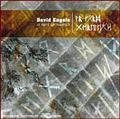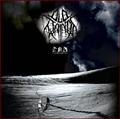CIRCUS MAXIMUS (no) - The 1st Chapter (2005)

Label : Frontiers Records / Pias
Sortie du Scud : 16 mai 2005
Pays : Norvège
Genre : Metal progressif
Type : Album
Playtime : 9 Titres - 71 Mins
Inutile de chercher bien longtemps pour savoir de quel côté ces norvégiens sont aller puiser leur style tant l’emprunt à DREAM THEATER est évident. Mais il serait injuste de s’arrêter à cette considération car ce 1st Chapter mérite mieux qu’une oreille distraite et une comparaison hâtive.
En premier lieu il convient d’admettre que si on a déjà pu entendre ce style trop souvent (et pas toujours pour le meilleur), CIRCUS MAXIMUS fait largement partie des plus convaincants. La qualité des compositions est absolument évidente ; on y trouve un soin particulier qui nous change de tous ces groupes qui se vautrent dans la complexité gratuite. Ici, les chansons sont alambiquées, parfois difficiles d’accès, mais elles conservent toujours cette lumineuse cohérence. D’ailleurs le groupe n’est pas avare de mélodies, ce qui vient largement nuancer l’aspect complexe des compositions. Au final, on prend un plaisir certain à suivre le groupe partout où il nous promène, même sans être un inconditionnel du progressif.
Et c’est peut-être la plus grande qualité de ce groupe : hormis quelques passages sur l’instrumental “Biosfear” (et ici et là, quelques petites incartades techniques) nous avons droit à de vraies chansons, complexes certes, mais pas uniquement destinées aux musiciens confirmés. Ainsi les deux plus longs morceaux de cet opus, “Glory Of The Empire” (10’27) et “The 1st Chapter” (19’07), se digèrent très facilement.
Il faut dire que CIRCUS MAXIMUS revendique un très large éventail d’influences qui va du Pop/Rock des 70’s au Death Metal en passant par le Heavy. Il serait exagéré de prétendre que cela s’entend vraiment, cependant cette ouverture d’esprit a probablement eu une incidence sur la façon de composer.
On se réjouit aussi de cette idée toute bête de reprendre certaines paroles d’une chanson à l’autre.
Côté interprétation, là encore, on ne peut qu’être admiratif devant ces musiciens talentueux jamais démonstratifs ni grandiloquents !
Pour couronner le tout, la production maison est remarquable ; notons que c’est Tommy Hansen (HELLOWEEN, PRETTY MAIDS,…) qui s’occupe du mixage.
Ajouté : Mardi 10 Mai 2005
Chroniqueur : Alexis de Fireball
Score :    
Lien en relation: Circus Maximus Website
Hits: 16239
|














